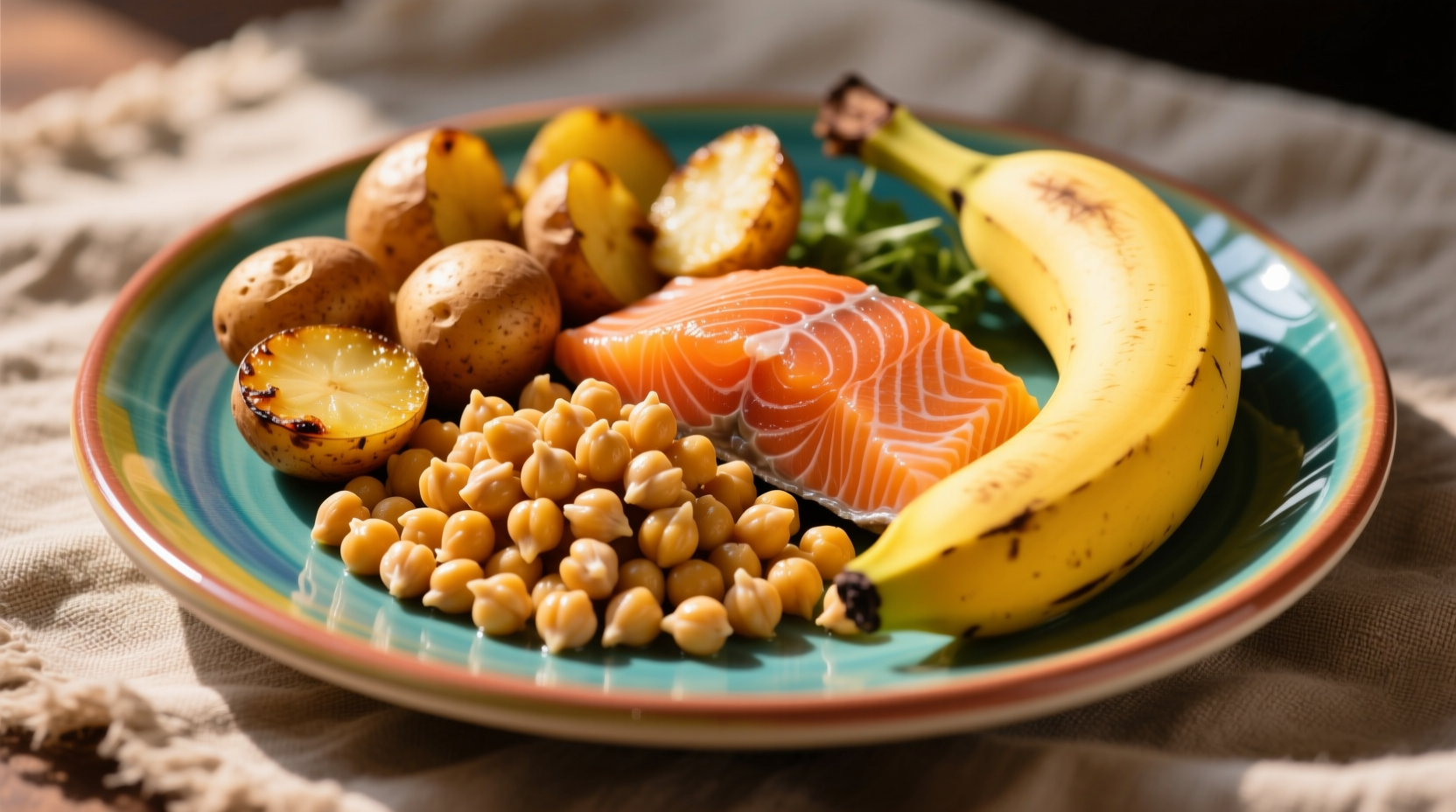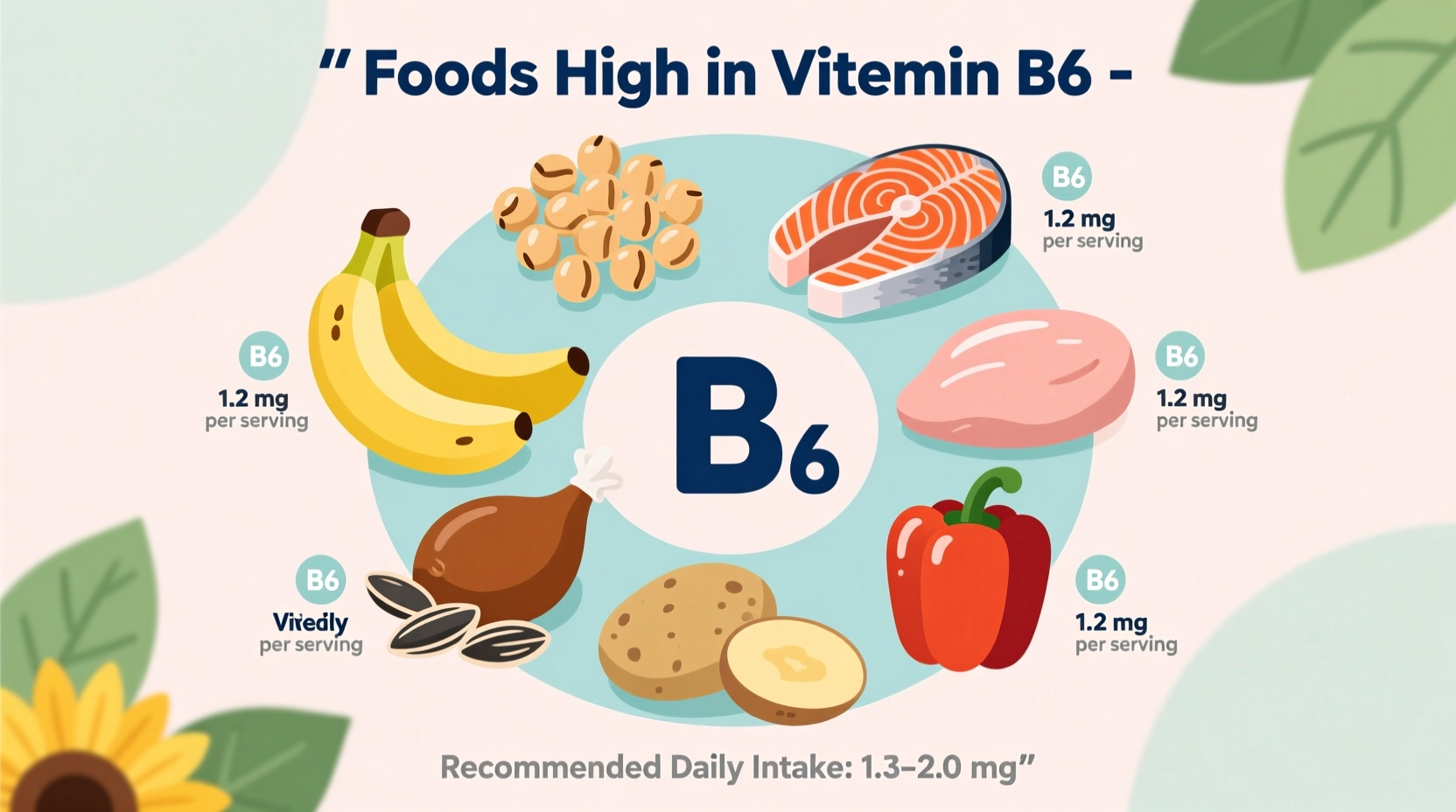Top vitamin B6 foods include chickpeas (1.1 mg per cup), yellowfin tuna (0.9 mg per 3 oz), salmon (0.6 mg per 3 oz), chicken breast (0.5 mg per 3 oz), and potatoes (0.7 mg per medium potato). Just one serving of these provides 35-85% of your daily requirement. This guide reveals all top sources with exact amounts, practical meal integration tips, and science-backed daily needs.
Ever wonder which everyday foods pack the most vitamin B6 punch? You're not alone. Millions search for reliable vitamin B6 sources to support energy metabolism, brain function, and immune health. Unlike supplements, food-based vitamin B6 comes with synergistic nutrients that enhance absorption. In this guide, you'll get precise USDA-verified food values, preparation tips that preserve nutrients, and clear daily targets—no fluff or filler. Let's dive into what actually works.
Why Vitamin B6 Matters Beyond Basic Nutrition
Vitamin B6 (pyridoxine) isn't just another vitamin. It activates over 100 enzymes involved in protein metabolism and neurotransmitter production. Crucially, food-derived B6 has higher bioavailability than supplements because it arrives with natural co-factors like magnesium and zinc. As noted by the NIH Office of Dietary Supplements, "dietary patterns rich in B6-containing foods correlate with better cognitive outcomes"—especially when consumed consistently.

Top Vitamin B6 Foods: USDA-Verified Values
These rankings reflect cooked/prepared forms (raw values differ). Values are per standard serving based on USDA FoodData Central measurements:
| Food | Serving Size | Vitamin B6 (mg) | % Daily Value* |
|---|---|---|---|
| Chickpeas (cooked) | 1 cup | 1.1 | 65% |
| Yellowfin Tuna | 3 oz | 0.9 | 53% |
| Potato (with skin) | 1 medium | 0.7 | 41% |
| Salmon (sockeye) | 3 oz | 0.6 | 35% |
| Chicken Breast | 3 oz | 0.5 | 29% |
*Based on 1.7 mg daily requirement for adults over 50 (NIH standards)
Meeting Your Exact Daily Needs
Daily requirements vary significantly by life stage. The National Academies of Sciences establishes these thresholds:
- Adults 19-50: 1.3 mg
- Men 51+: 1.7 mg | Women 51+: 1.5 mg
- Pregnant women: 1.9 mg
Notably, absorption decreases with age—making food sources critical for seniors. Cooking methods also impact retention: boiling leaches 20-30% of B6 into water, while roasting preserves nearly 100%. Always consume potatoes with skin and legumes unsoaked for maximum benefit.
Practical Integration: Beyond Basic Meal Planning
Maximize your intake with these chef-tested strategies:
- Boost plant-based meals: Add 1/2 cup chickpeas to salads (0.55 mg) + 1 banana (0.4 mg) = 70% of daily needs
- Optimize fish dishes: Pair salmon with roasted potatoes (skin-on) for synergistic nutrient absorption
- Smart snacking: Choose pistachios (0.3 mg/oz) over processed bars—they provide B6 plus heart-healthy fats
Vegetarians take note: Spinach and fortified cereals provide modest amounts (0.1-0.2 mg/serving), but require strategic combining. One study in Nutrients Journal found vegetarians need 25% larger portions of B6-rich plants to match omnivore intake due to lower bioavailability.
Diet-Specific Considerations
Vitamin B6 needs shift with dietary patterns. For plant-based eaters, prioritize chickpeas, lentils, and bananas—but be aware that raw garlic and onions (common in vegan diets) can degrade B6 during digestion. Those managing blood sugar should note that high-B6 foods like potatoes have moderate glycemic impact; pair with protein to stabilize levels. Always consult your healthcare provider before making major dietary changes, especially if taking medications like levodopa.











 浙公网安备
33010002000092号
浙公网安备
33010002000092号 浙B2-20120091-4
浙B2-20120091-4